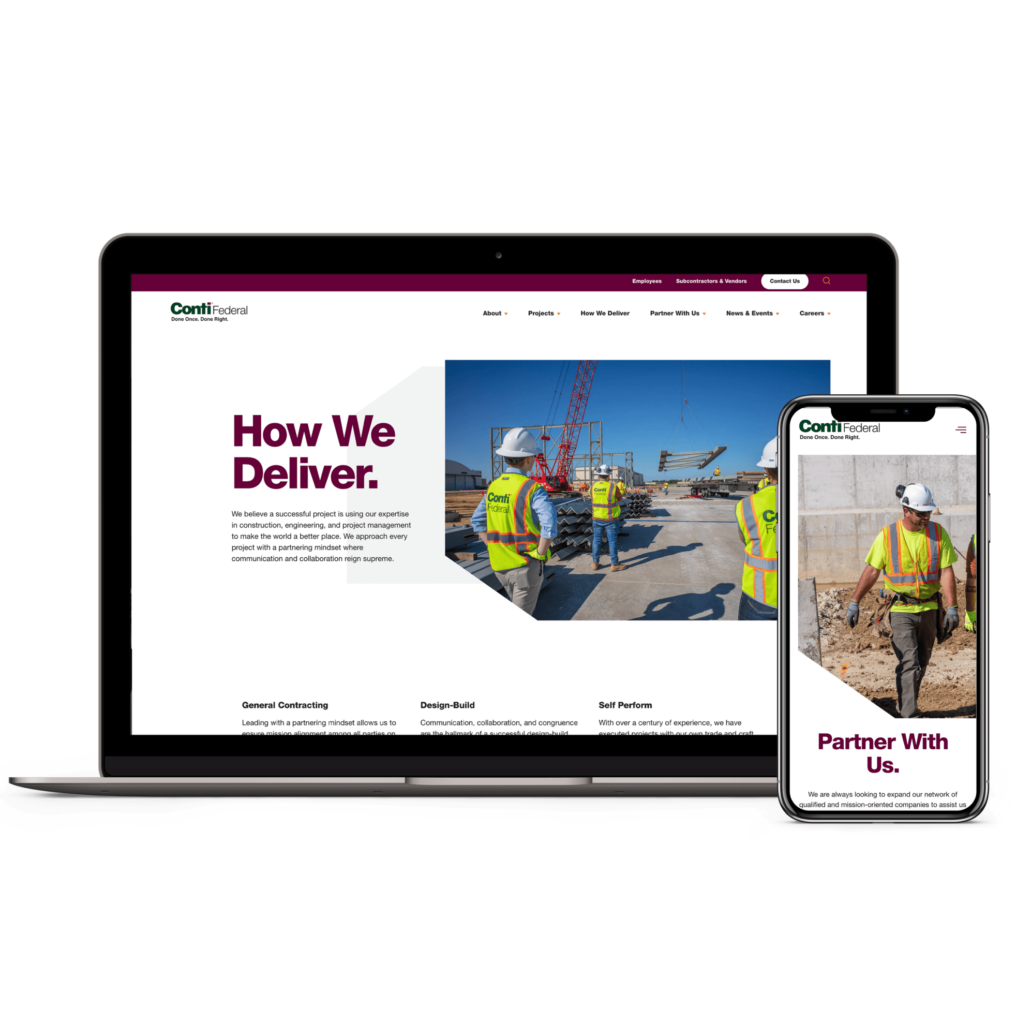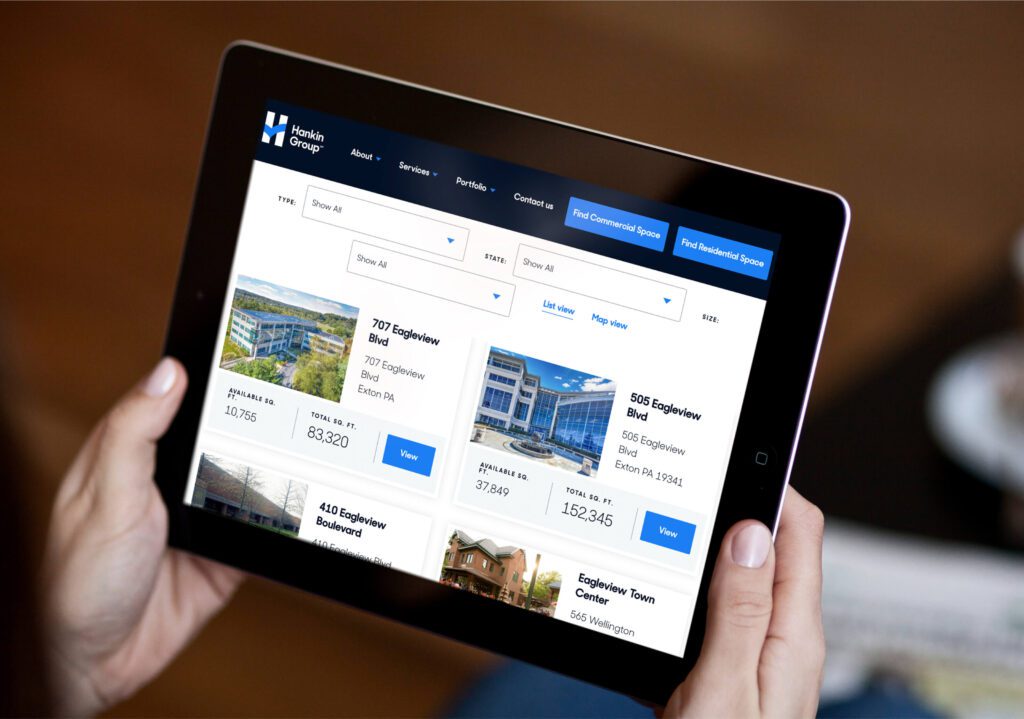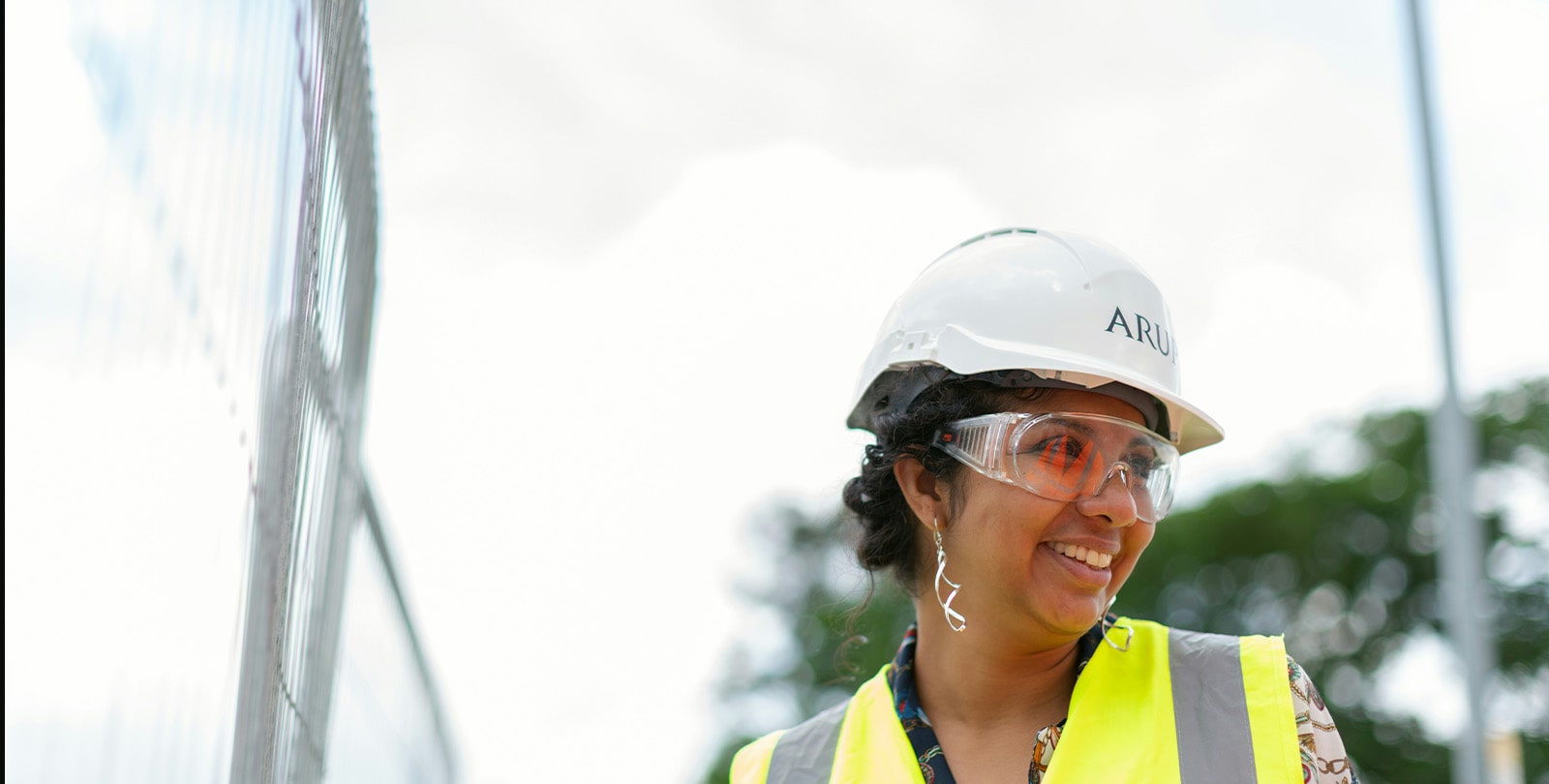Length
5 min read
Topic
Articles & Insights
Our clients all face a version of this same challenge; how do you make the spaces you design, build, or help create come to life online?
How to Show Your Work On Your Website
A picture’s worth a thousand words – like a lot of cliches, it’s a cliche because it’s pretty true. Every architecture, engineering firm, or construction company needs to show their work on their website. Depicting your work helps validate that you’re the right firm for the next job. And, in many cases, the work itself looks good and, as a result, makes the website look better.
But are some pictures on your website really enough? What are the best ways to translate real-world work into online examples? Where does the process it took to do the work fit in? How often should you even be publishing case studies?
We tackle questions like that from AEC firms of all shapes and sizes. Here are a few things we’ve learned that make a case study stand out.
The Work is More Than Case Studies
Don’t sequester the work itself to case study pages. From images across the site, to shining examples of your offerings on service pages, there are a lot of places to show specific projects on your website. Peppering the site with examples of your work also creates great cross-linking opportunities. Three strong case studies that fit into a specific service area are a great way to say “check out how we actually do this.”
Find Your Angle
One challenge that our clients are always facing is how to stand out from other firms. They often come to us because they struggle to get their design direction past pictures of buildings. If their prospects are researching multiple firms, and all of their websites are just pictures of their work, well, it all starts to blend together.
This is where having a creative partner who is familiar with the landscape can be incredibly valuable. We encourage all our clients to show off plenty of pictures of their work; it’s our job to put a unique spin on those pictures.
Having a branded design treatment for certain photos helps you stand out, and create recognition of your brand among your core audience. These treatments could be anything from the art direction of the photos itself to color overlays or a set of additional graphic accents that make photos pop. We’ve done them all and each time the end result feels unique.
Video Doesn’t Hurt Either
As stunning as photography can be, having video on your website in high-traffic areas can provide a lot of depth to the work that you do. For AEC firms especially, video can be a great way to show details and dimension to your work that photography couldn’t quite capture.
Video content connects with users, too. Hubspot research shows that 54% of users want to see video content. This could take several different forms. We recommend a strategic mix of informative videos that adds to the site’s storytelling (like a process overview video) and accent video that elevates the site and provides a more premium feel (like B-roll style drone footage).
Make the Work Easy to Browse
For firms that work in a number of different verticals, offer multiple services, or both, we always find it helpful to give users routes to narrow their focus. Odds are, your firm doesn’t provide every service available to every client you work with.
Using a filter system on a case study archive allows people to see only the case studies that are most relevant to the type of work they need done, or to their industry. As more firms claim specialized industry expertise as a core differentiator, these filter options can also help you “pre-sort” case studies for key landing pages, focused on specific industry practice areas.

Tell a Compelling Story
We’ve worked on sites where case studies might consist of a project title and a few images of the finished project. Great for quick browsing, but how does that help your prospective clients understand what you brought to the table?
Case studies should be more than just a record of the work. They should show a new prospect how you handle the types of problems they have. They should position you as the right partner for their project.
This requires asking two questions (and, obviously, getting good insightful answers); what does your audience worry about, and how can you reassure them that if they work with you, they won’t have to worry?
New build projects are more expensive (and often less profitable) than they’ve ever been. The fear of rework is huge among AEC clients, regardless of industry. Does your firm address this with strategy? Technology? Collaboration? Figuring out what story you want to tell through your case studies helps ensure they’ll be more compelling than just pictures.
Okay, the Pictures are Pretty Important Too
The story doesn’t really come to life if you can’t see the work. Make sure that your case studies show off the end result!
One important thing to remember here is that you can have beautifully designed case studies, with impactful photography, even if, sometimes, the look of the building itself is a little plain. Think about a warehouse. That’s a massive project with unique challenges, nuances, and true expertise required to execute well, even though when it’s all said and done, it will probably look like any other warehouse.
The important thing here is to capture high-resolution, professional-level photography that adheres to your brand style. This will elevate the entire case study, regardless of the subject of the photos. The other key here is to know which details are going to stand out to your audience and capture photography that shows those details off.

Offer a Clear Next Step
Building a website that shows your work only has an impact if web visitors know what to do next. Clear and well-defined user paths are central to an effective website. Add calls to action to case studies so readers can reach out to you, learn more about your firm, or keep exploring similar projects in your portfolio. You never want a page that you’ve invested time into to be a dead end on your website.
Your Work Speaks Volumes, But it Can’t Speak For Itself
A strong portfolio should be the centerpiece of an architecture, construction, or engineering website. By approaching your portfolio strategically and with a clear direction, you can help your work stand out from the competition.



